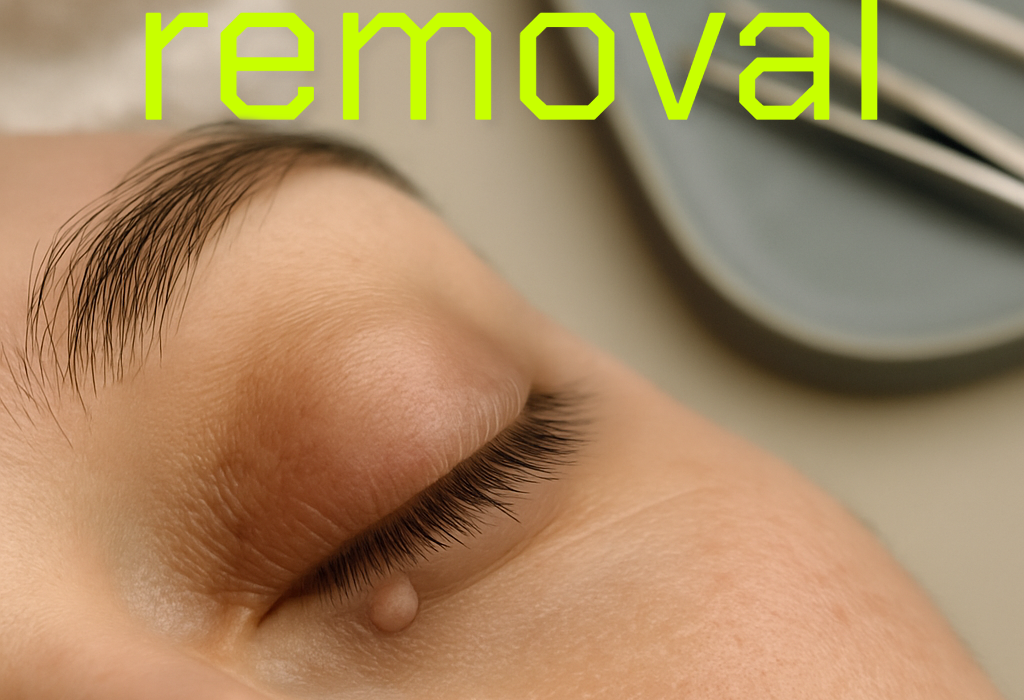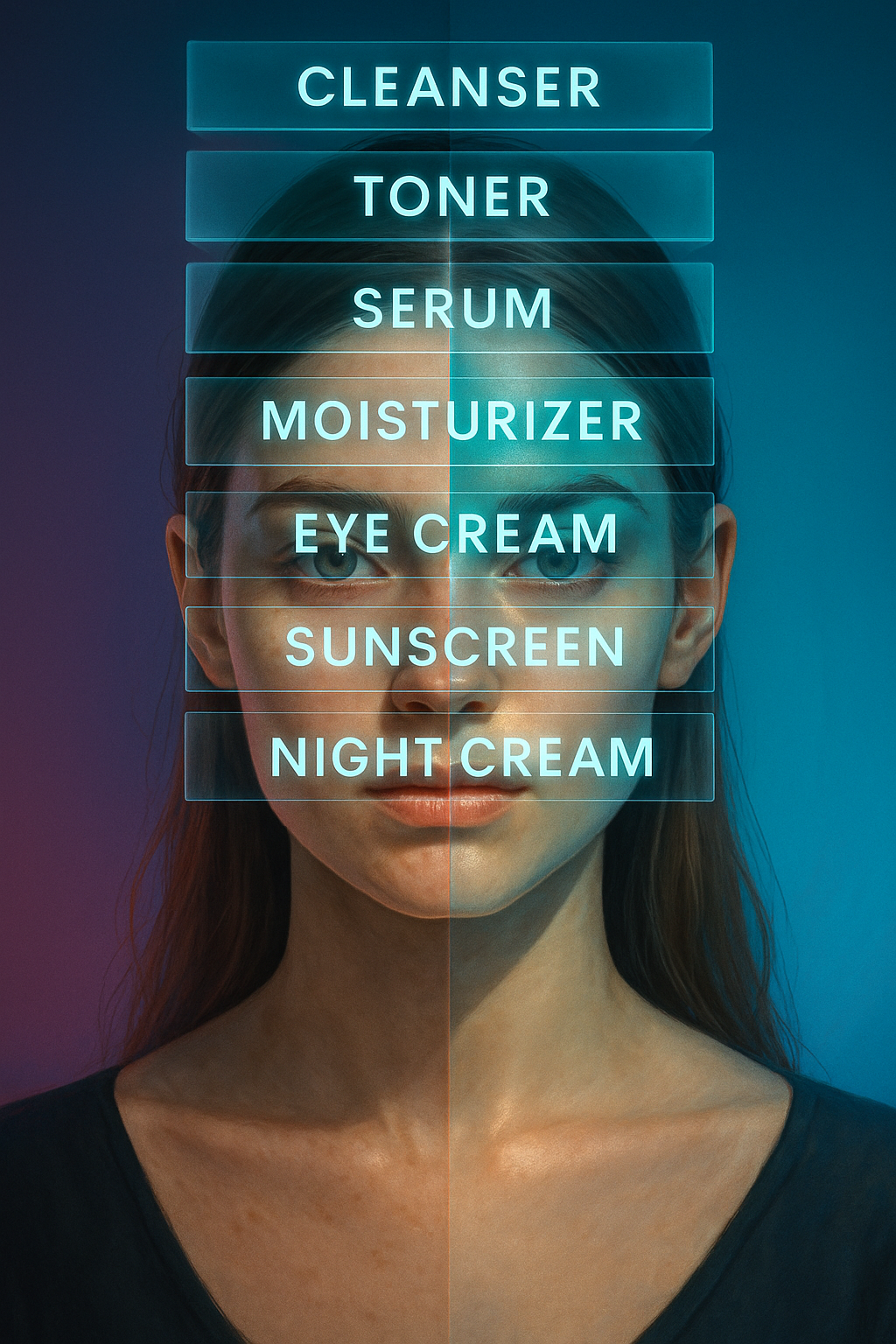Skin tags on the eyelid are a common but often overlooked cosmetic concern. Although harmless, their appearance in such a delicate and visible area can cause discomfort, self-consciousness, or functional irritation. If you’ve spotted a small, soft, skin-colored bump near your eye, you’re not alone. In this guide, we’ll cover everything you need to know about skin tags on the eyelid, including what causes them, how to safely remove them, when to see a doctor, and how to prevent them from coming back.
What Is a Skin Tag?
A skin tag, also known as an acrochordon, is a benign, noncancerous growth of skin. These tags are typically flesh-toned or slightly darker and appear as small, soft flaps of skin that hang off the surface. They contain collagen fibers and blood vessels and tend to grow in areas where the skin folds or experiences friction.
Why Do Skin Tags Appear on the Eyelid?
The eyelid is a prime location for skin tags due to its thin skin and frequent movement. Friction from blinking, rubbing, or using skincare or makeup products can irritate the skin and encourage the formation of tags.
Common Causes of Eyelid Skin Tags:
- Natural aging process
- Genetics
- Hormonal changes
- Rubbing from glasses or eye makeup
- Weight gain or obesity
- Diabetes or insulin resistance
- Skin irritation from chronic rubbing
The eyelid area is especially sensitive, so the formation of even small growths can be more noticeable than on other parts of the body.
Are Eyelid Skin Tags Dangerous?
No, skin tags on the eyelid are not dangerous. They are benign growths and typically painless. However, their placement near the eye can make them more annoying than skin tags elsewhere. Some people may experience irritation when blinking, or difficulty applying makeup, or may simply dislike the appearance.
There are rare instances where skin tags may resemble other skin conditions or tumors. If the tag changes shape, color, or begins to bleed, it’s important to seek medical advice to rule out other concerns.
How to Identify a Skin Tag on Your Eyelid
Skin tags are:
- Small (1 to 5 millimeters)
- Flesh-colored or slightly pigmented
- Soft and moveable
- Connected by a thin stalk
They differ from warts (which have a rougher surface) or milia (which are white and firm). A professional can help confirm whether the bump is truly a skin tag or something else.
Should You Remove a Skin Tag on Your Eyelid?
Removal is a personal choice. If the tag is not causing physical discomfort or affecting your vision, you can leave it alone. However, many choose removal for cosmetic reasons or due to irritation.
You should consider removal if:
- It interferes with vision or blinking
- It causes discomfort when wearing glasses or makeup
- You are concerned about its appearance
- It bleeds or becomes irritated
Can You Remove Eyelid Skin Tags at Home?
Because the eyelid is a sensitive area and located close to the eye, home removal is not recommended. Over-the-counter skin tag removal products are not safe to use on the eyelid, as they may cause burns, scarring, or damage to the eye.
Avoid:
- Skin tag patches
- Freezing kits
- Tying off the tag (ligation)
- Nail clippers or scissors
These methods may be effective on other body parts but pose a high risk near the eye.
Safe Medical Options for Eyelid Skin Tag Removal
Only a licensed professional should remove skin tags near the eye. The following procedures are typically done in a dermatologist or ophthalmologist’s office:
1. Cryotherapy
A freezing agent (usually liquid nitrogen) is applied to the tag, which causes it to fall off over time. This may sting briefly and can cause temporary discoloration.
2. Excision
A sterile blade or surgical scissors is used to cut off the skin tag. This is done with local numbing and leaves minimal scarring.
3. Electrocautery
A small electrical current burns the skin tag at the base, causing it to fall off. It also seals the wound and reduces bleeding.
4. Laser Removal
A focused laser beam targets the tag and removes it. This method is precise and useful for small or hard-to-reach areas.
Each procedure is quick, and most patients return to normal activity immediately afterward.
Aftercare Tips
Post-removal care is essential to prevent infection or scarring. Always follow your doctor’s instructions. General tips include:
- Keep the area clean and dry
- Avoid touching or rubbing the eyelid
- Refrain from using makeup until fully healed
- Apply antibiotic ointment if prescribed
- Watch for signs of infection such as redness, swelling, or pus
Healing usually takes one to two weeks depending on the removal method used.
Can Eyelid Skin Tags Come Back?
Skin tags removed from the eyelid do not typically regrow in the same spot. However, new tags can form in nearby areas if the conditions that caused the original remain unchanged.
How to Prevent Skin Tags on Eyelids
While you cannot always prevent skin tags, there are steps that may reduce your risk:
1. Reduce Friction
Avoid rubbing your eyes excessively. Remove makeup gently and avoid sleeping with makeup on.
2. Maintain a Healthy Weight
Obesity increases the likelihood of skin tags in general. Keeping a stable weight may help reduce occurrence.
3. Manage Blood Sugar
People with insulin resistance or diabetes are more prone to skin tags. Managing blood sugar may help reduce formation.
4. Gentle Skincare
Use non-irritating products around your eyes and avoid using expired makeup or skincare. Always patch test new products before applying them near the eyes.
When to See a Doctor
Seek professional advice if you notice:
- Rapid changes in size or color
- Bleeding or crusting
- Discomfort or pain
- Vision obstruction
- Multiple new growths appearing suddenly
These could be signs of a different dermatological condition requiring medical evaluation.
Myths About Eyelid Skin Tags
1. They Are Contagious
Skin tags are not caused by viruses and cannot be spread from person to person.
2. Only Older Adults Get Them
While more common with age, skin tags can appear in younger people too, especially those with hormonal changes or high friction.
3. They Are Cancerous
Skin tags are benign. However, it’s always good to get a professional diagnosis to rule out other conditions.
Cosmetic Considerations
Although harmless, eyelid skin tags can impact self-image. Many choose to remove them for aesthetic reasons, particularly if they are prominent or make applying makeup difficult. If appearance matters to you, speak with a dermatologist about minimally invasive removal options that preserve the natural look of your eyelids.
Summary
Skin tags on the eyelid are common, noncancerous skin growths. While not medically harmful, they can be bothersome or unsightly. They are best removed by a licensed professional due to the sensitive area. With safe removal methods and good skincare habits, you can manage and prevent future occurrences.
Frequently Asked Questions
What causes skin tags to appear on the eyelid?
Friction, hormonal changes, age, and genetics are the main causes. They are also more common in people with diabetes or excess weight.
Can I remove an eyelid skin tag myself?
It is strongly advised not to remove them at home. The proximity to your eye makes home treatments unsafe and potentially harmful.
Do skin tags grow back after removal?
The removed tag usually does not grow back, but new tags may form nearby if the root causes are still present.
How can I prevent new eyelid skin tags?
Use gentle skincare, maintain a healthy weight, manage blood sugar, and reduce eye irritation from rubbing or harsh makeup.
When should I worry about a skin tag?
If the tag grows quickly, changes color, bleeds, or becomes painful, consult a doctor to rule out other conditions.
Is eyelid skin tag removal covered by insurance?
Generally, cosmetic removal is not covered. However, if the tag causes medical issues such as obstructed vision, your insurance might help cover the cost.







